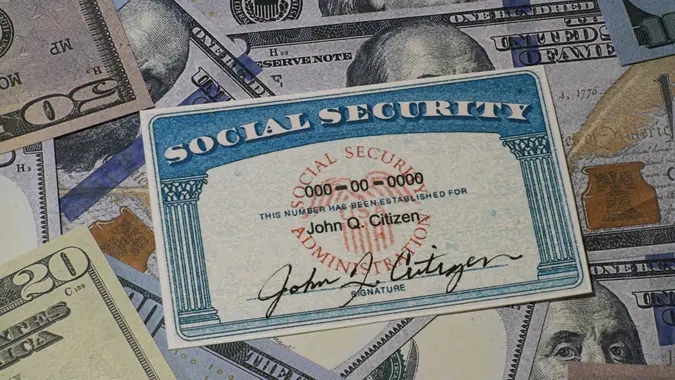6 Big Shakeups Coming to Social Security in 2025

Commitment to Our Readers
GOBankingRates' editorial team is committed to bringing you unbiased reviews and information. We use data-driven methodologies to evaluate financial products and services - our reviews and ratings are not influenced by advertisers. You can read more about our editorial guidelines and our products and services review methodology.

20 Years
Helping You Live Richer

Reviewed
by Experts

Trusted by
Millions of Readers
Nearly 70 million Americans rely on Social Security for monthly income. The vast majority, about 65 million, collect Social Security benefits. Another 4.5 million receive Supplemental Security Income (SSI) payments and 2.5 million receive both, according to the Social Security Administration (SSA).
The program supports millions of retirees, survivors, widows, family members, children, disabled workers and the indigent — and this year will bring significant changes for nearly all of them.
Here’s what you need to know about the big shakeups coming to America’s largest social safety net program in 2025, and what those changes mean for anyone collecting Social Security or SSI benefits.
Beneficiaries Get a 2.5% Raise
The SSA issues cost-of-living adjustments (COLAs) each year to ensure benefits keep pace with rising prices as inflation erodes recipients’ purchasing power.
In 2025, nearly 73 million Social Security and SSI recipients will see their benefits increase by 2.5%. That’s just under the 2.5% by which the average COLA boosted benefits over the last decade.
It’s even less than the 3.2% raise recipients received in 2024 and much less than the 40-year-high 8.7% jump from 2023.
The Average Monthly Payment Is Higher
The real-world result of the 2.5% COLA is a higher average monthly benefit payment. The average Social Security payment changes from month to month, but in January, it’s $1,976, compared to $1,788.12 at the end of 2024.
The Maximum Social Security Benefit Increases
The maximum benefit recipients can receive depends on the age at which they retire. Here are the payment caps for 2025 for those who retire at the age of eligibility, full retirement age and the age at which the SSA stops issuing delayed-retirement credits.
- Age 62: $2,831, up from $2,710
- Full retirement age: $4,018, up from $3,822
- Age 70: $5,108, up from $4,873
The Maximum SSI Benefit Rises, Too
The COLA is also good news for those who rely on SSI. In 2025, the maximum monthly SSI payment rises to $967 for individuals and $1,450 for couples, up from $943 and $1,415, respectively, in 2024.
More Income Is Eligible for Taxation To Fund the Program
The SSA adjusts the maximum amount of income subject to Social Security tax annually. In 2025, this amount — also known as the contribution and benefit base or taxable maximum — increases from $168,600 to $176,100.
Early Retirees Can Earn More Income Without Benefit Reductions
Those who claim Social Security before their full retirement age see their payments temporarily reduced if they earn too much income while collecting benefits.
In 2025, the so-called income test limit rises from $22,320 to $23,400. After that, the SSA deducts $1 of benefits for every $2 earned over that income threshold. For those who will reach full retirement age in 2025, the limit is $62,160, after which the SSA deducts $1 for every $3 earned.
There is never a reduction once beneficiaries reach their full retirement age, no matter how much income they earn.
More From GOBankingRates
 Written by
Written by  Edited by
Edited by 

























